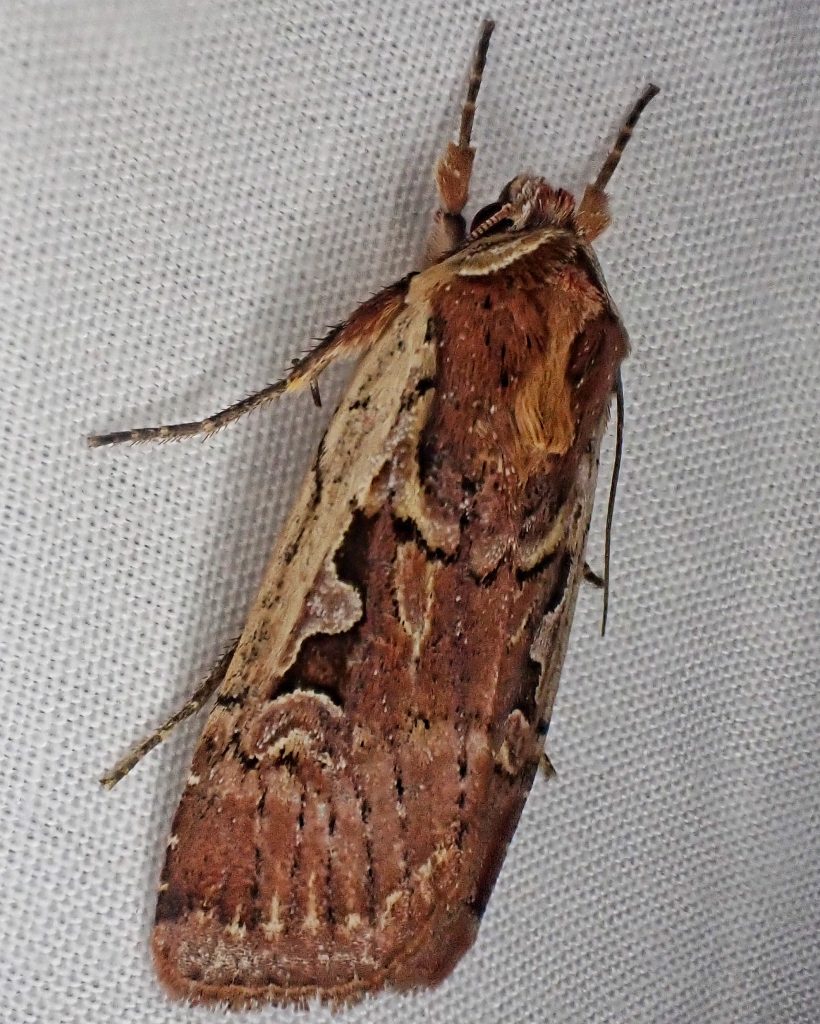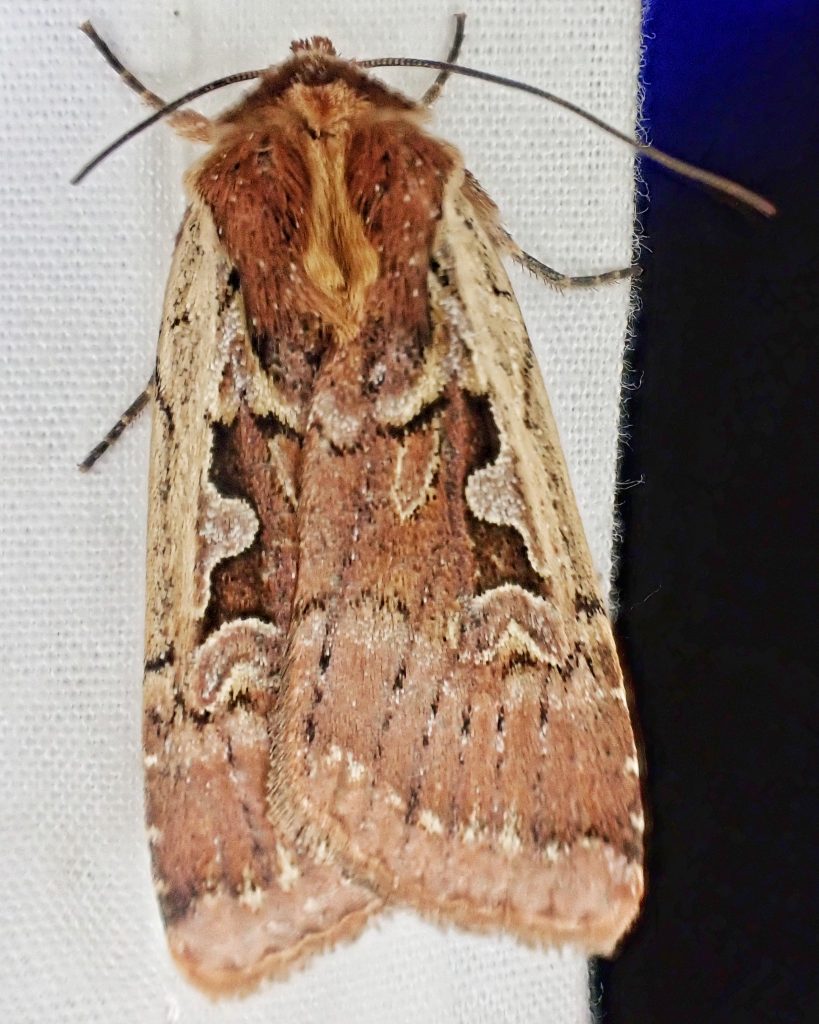
I was a little surprised to learn that Parabagrotis sulinaris as a distinct species wasn’t described until 1998. Until then, when Don LaFontaine looked into them for the work he was doing on Noctuidae for fascicle 27.3 of “The Moths of North America, North of Mexico”, they were considered to be a morph of P. insularis, despite the fact that P. sulinaris are bigger, more red, have a light area near the anterior costa, and have a somewhat differently shaped orbicular spot and a complete reniform spot. I don’t mention this to throw shade on any lepidopterists, but to point out how little attention moths used to get, such that discrepancies like these could get missed. And to compare it to the 21st century splitters, who often seem to try to turn relatively minor variations into separate species.
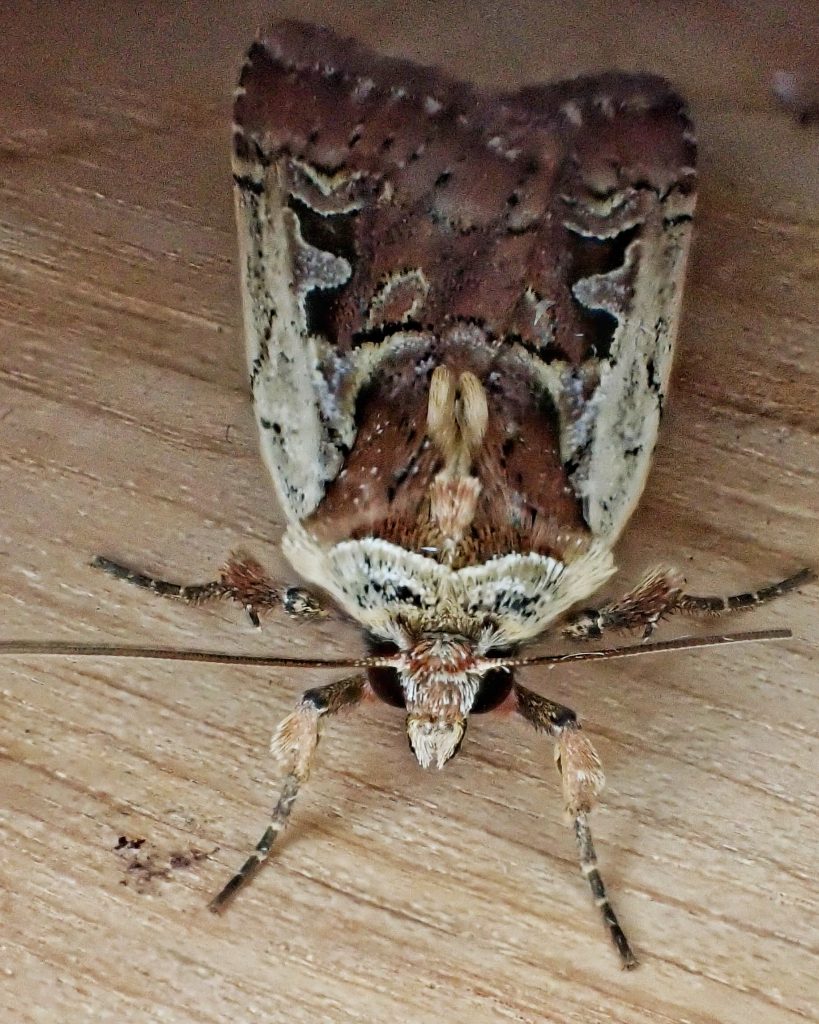
Regardless of their history, these are quite strikingly colored and patterned moths. I hadn’t seen one in a couple years (apparently I don’t do enough mothing in late summer near the grasses on which their larvae feed), and, though I knew I recognized this moth when it visited my lights on the ‘Trip to the confluence of the NF Toutle and Green Rivers, I couldn’t remember what it was. It reminded me of Parabagrotis formalis, a moth I do see more regularly, especially in late spring/early summer, except that it lacked the big, black ‘collar’ that species has on the front of the thorax. And, lo and behold, I got the genus right and once I was home it only took a few seconds on MPG to find my winner.
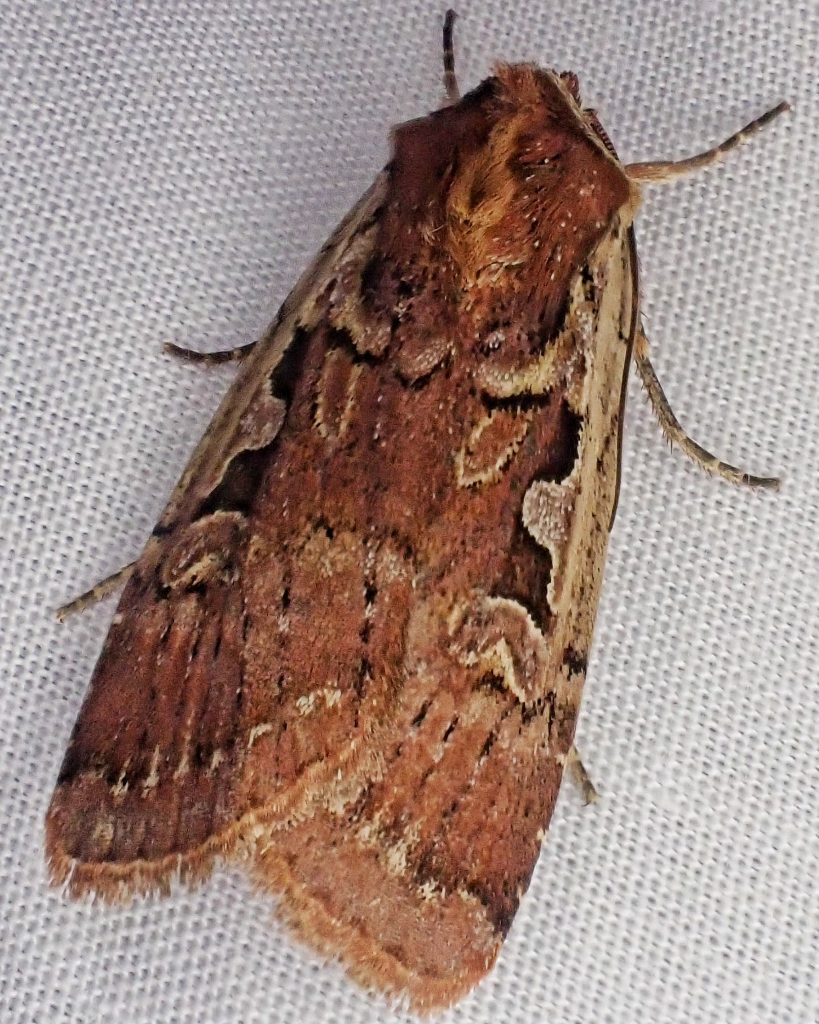
Description– “Forewing 16-21 mm…This is the largest and most boldly patterned of the five species of Parabagrotis. In areas mainly west of the Cascades the overall color is usually reddish brown with a yellow-buff shading on the prothoracic collar. The prothoracic collar has a transverse black line at the apex with fainter black lines on the collar below this. The mesothoracic and metathoracic tufts are lighter in color than rest of thorax. Forewing color varies from reddish brown to orange brown with pale buff shading on the front margin of wing and around or partially filling the orbicular, reniform, and claviform spots. Terminal area is usually paler than other areas of forewing but not as pale as forewing margins. Hindwings are smoky brown. In drier area east of the Cascades, specimens often have a paler forewing color of reddish buff which gives a more contrasty look.” Species Parabagrotis sulinaris – Hodges#11048 – BugGuide.Net
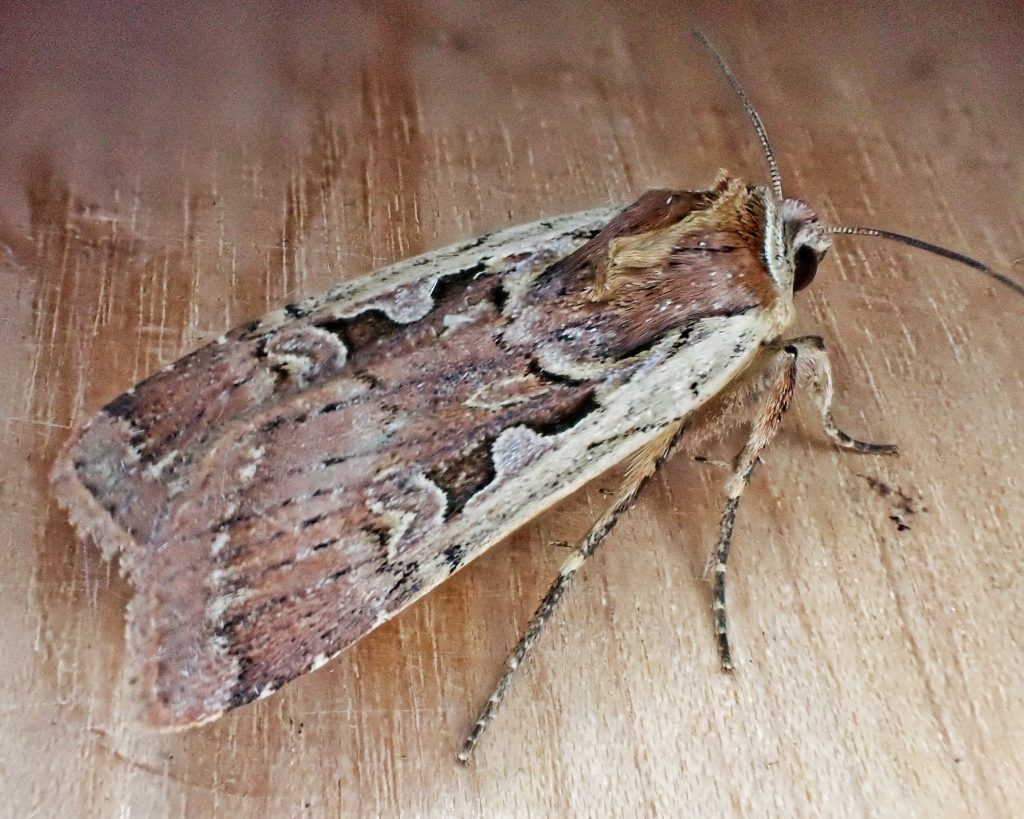
Similar species– “This species can usually be recognized by its large size, open V-shaped orbicular spot, and orange-brown or red-brown color with a pale costa. It is most similar to Parabagrotis formalis, but this species has a thick black collar that P. sulinaris lacks. Parabagrotis sulinaris also resembles Pseudohermonassa flavotincta which occurs along the Pacific Coast. This species has a narrow orbicular spot, unlike the open V-shape of Parabagrotis species, and its claviform spot is black, not pale is in P. sulinaris.” PNW Moths | Parabagrotis sulinaris
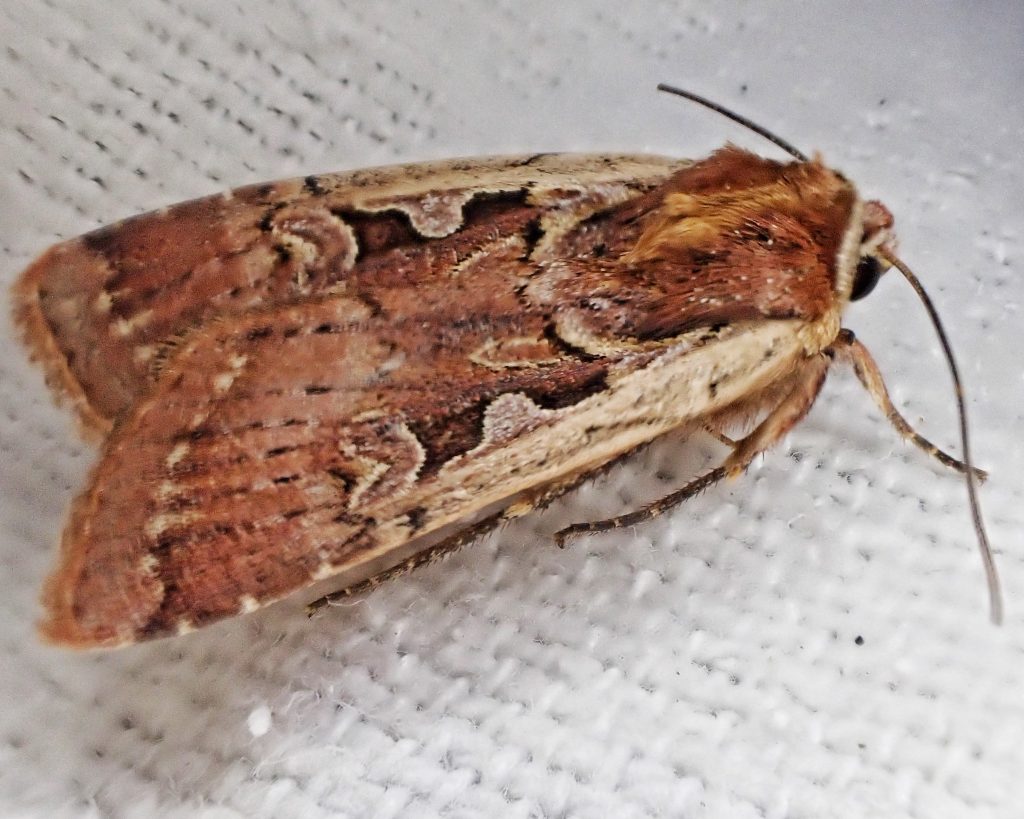
Habitat– “This species occurs in grassland and forest habitats. It is common to abundant in dry grasslands, oak savanna, oak woodlands, mixed hardwood forests, coastal rainforests, riparian wetlands, and even disturbed urban and agricultural areas at low elevations west of the Cascades. It is also common in high mountain meadows along the summit of the Cascades and in the Rocky Mountain region, and in dry, open ponderosa pine forests at middle elevations east of the Cascades. However, it is usually rare or absent from juniper woodlands and sagebrush steppe at lower elevations.” PNW Moths | Parabagrotis sulinaris
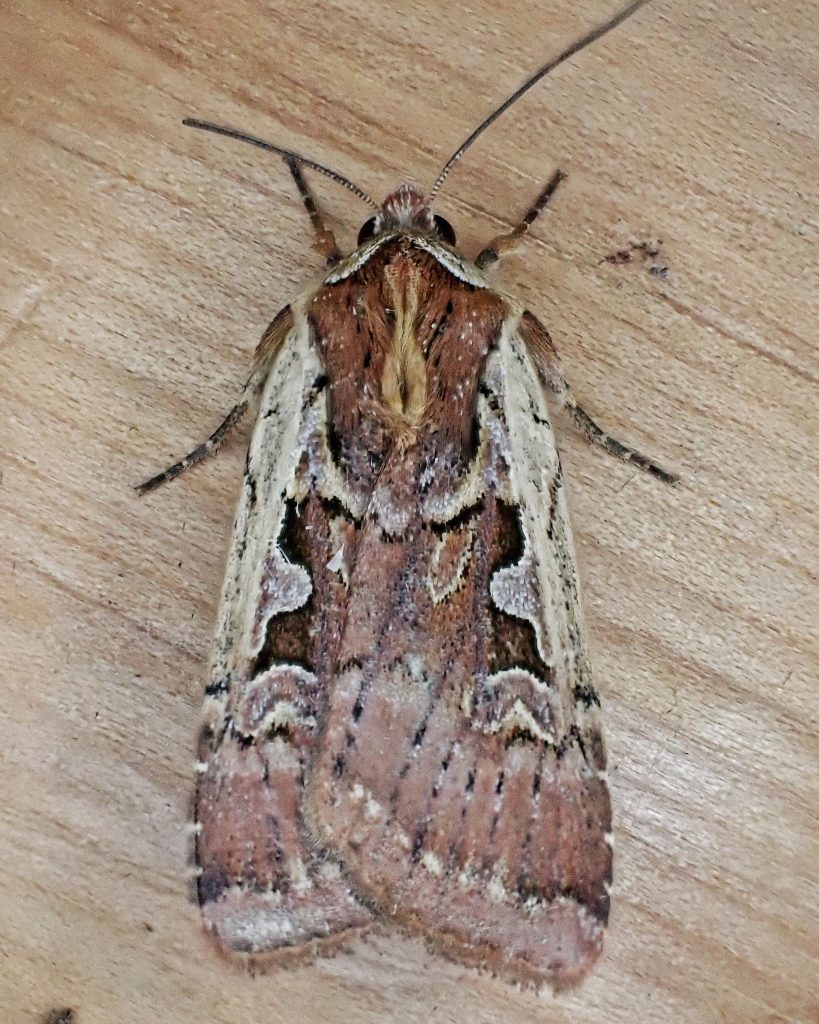
Range– “The range of this species is almost exclusively limited to the Pacific Northwest. It also occurs in extreme northern California…Parabagrotis sulinaris is found from southern British Columbia to southern Oregon from the Pacific Coast east to eastern Montana. It occurs on both sides of the Cascade Mountains but has a spotty distribution east of the mountains where it is predominantly limited to mountains and is not found in low-elevation steppe habitats.” PNW Moths | Parabagrotis sulinaris
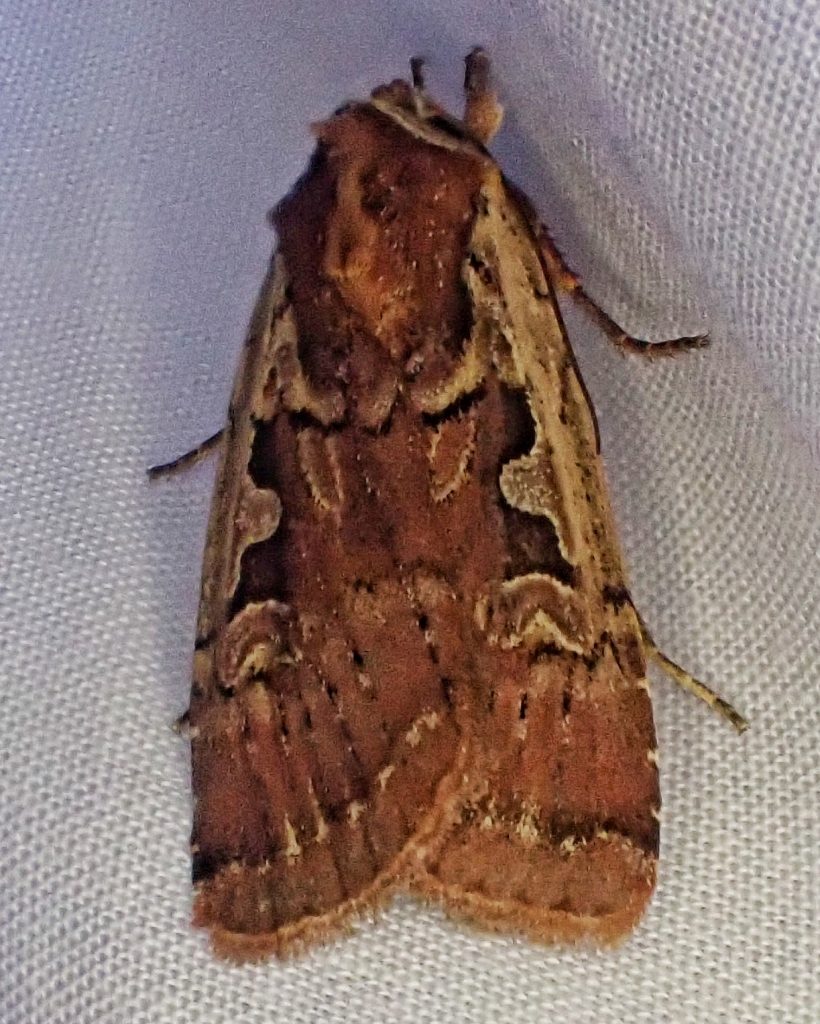
Eats– “This species is a climbing cutworm that appears to be a foodplant specialist feeding on grasses (Poaceae), and may favor the taller, coarser grasses.” PNW Moths | Parabagrotis sulinaris
Eaten by– “Presumably a host for parasitoids in Hymenoptera and Diptera, and probably preyed upon by insectivores of all classes, but I can find nothing specific for this species.”
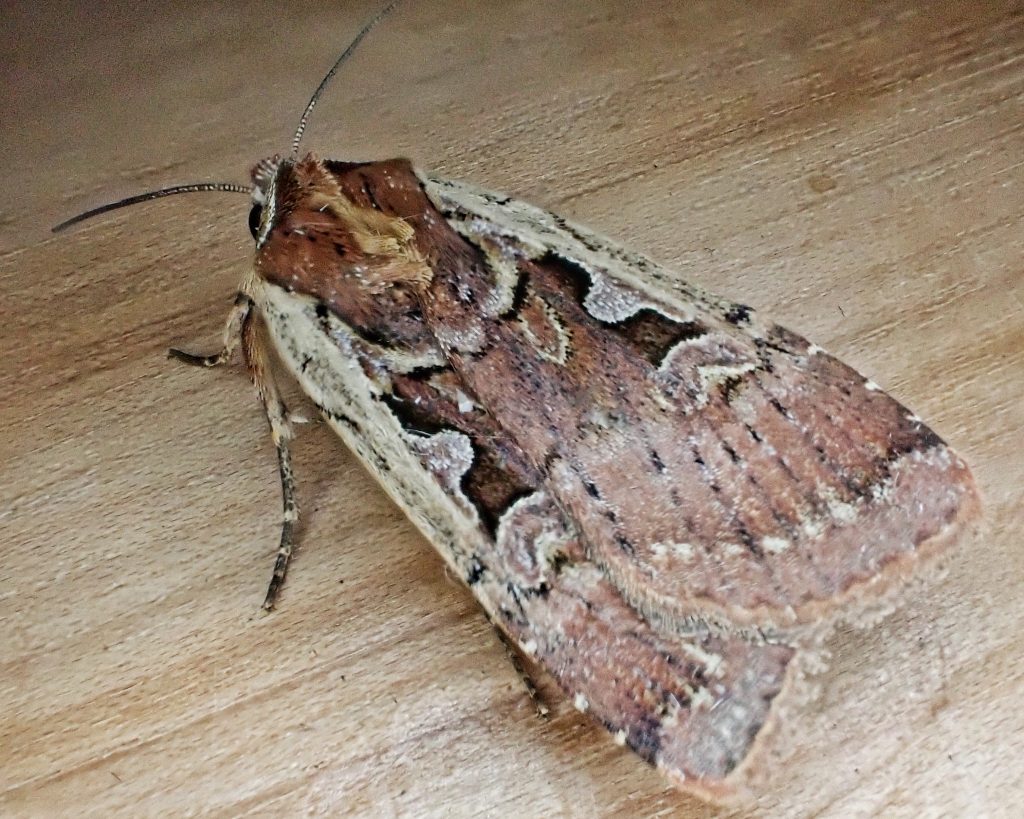
Adults active– “Adults have a long flight period and have been collected from early May to October in our region. They are nocturnal and come to lights.” PNW Moths | Parabagrotis sulinaris
Life cycle– I can find no information on the life history of this species, but based on the timing of the early flight it seems likely that they overwinter as an egg or early instar larvae, and based on there being a peak in early July, then a dropoff, and then a larger peak in early September, it seems likely that they may be bivoltine, at least in good conditions.
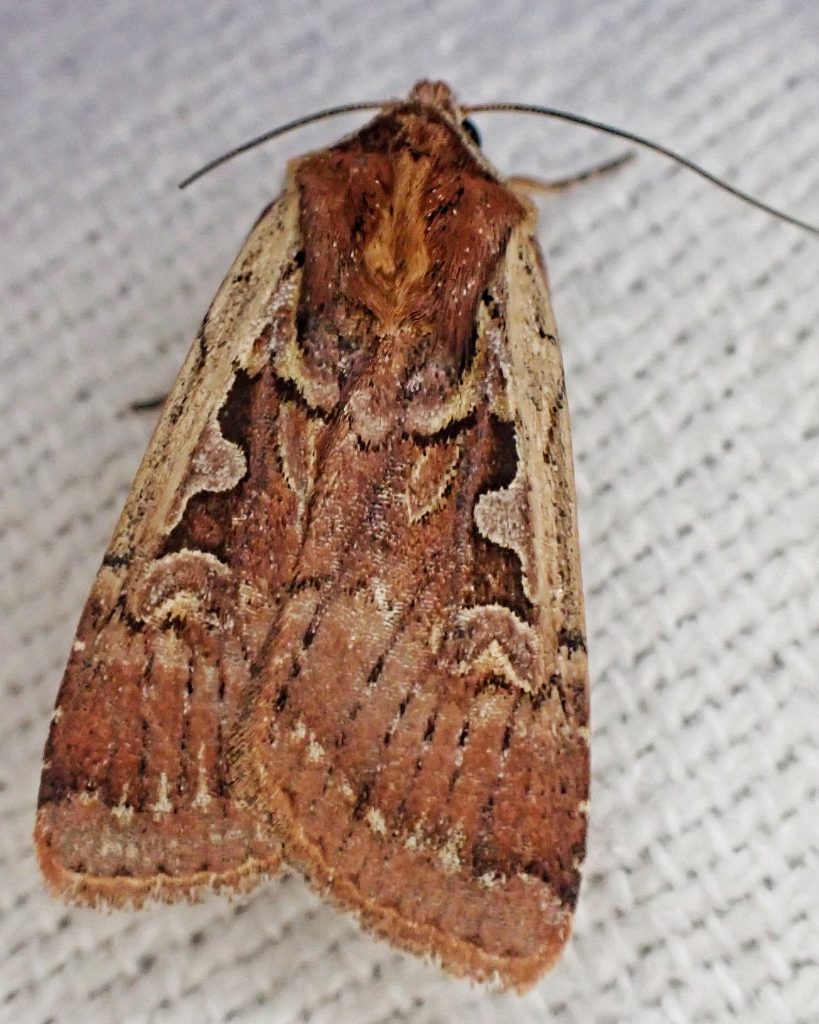
Etymology of names– Parabagrotis would appear to be from the Greek word for ‘near’, plus the Latin prefix for ‘away from’, plus the Greek word agrotis which means ‘field’ or ‘countryman’, and is the name of another genus of noctuid moths in the group commonly called darts. So you end up with it meaning ‘near the taxon (Abagrotis) that was away from Agrotis’, and is basically saying these are yet another group of similar darts. The specific epithet sulinaris is just an anagram of the species epithet for the closely related P. insularis.
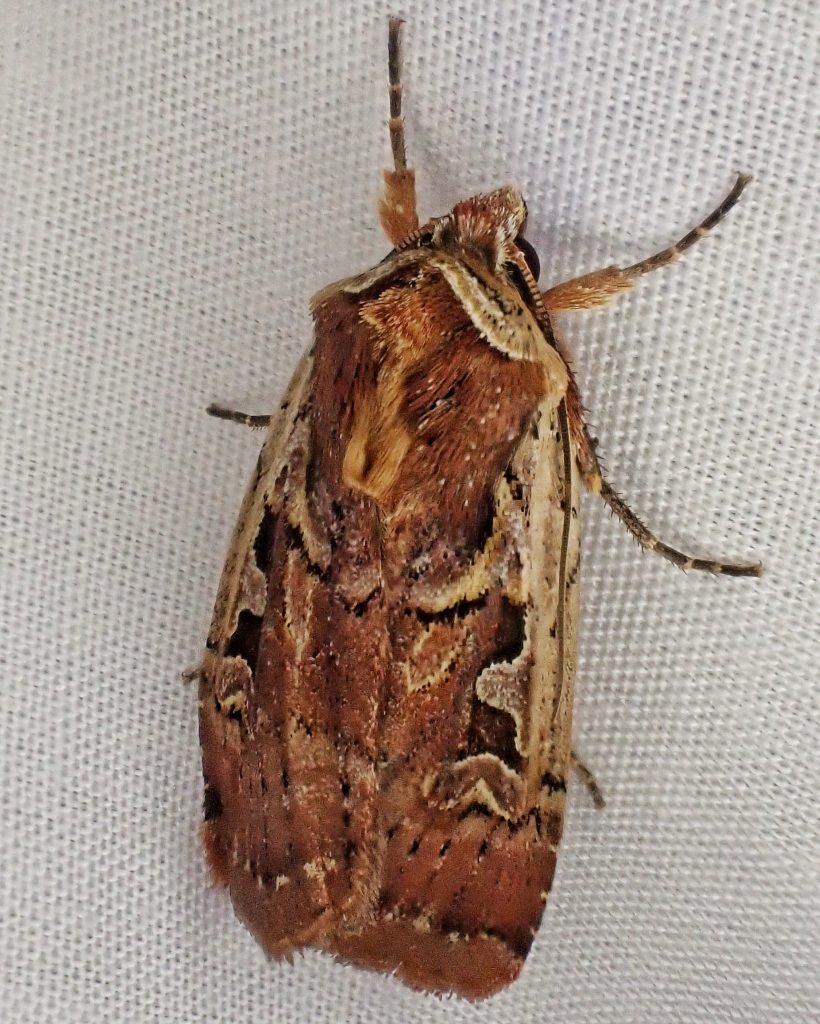
PNW Moths | Parabagrotis sulinaris
Parabagrotis sulinaris – University of Alberta Museums Search Site
Species Parabagrotis sulinaris – Hodges#11048 – BugGuide.Net
https://images.peabody.yale.edu/mona/27-3-ocr.pdf
http://mothphotographersgroup.msstate.edu/species.php?hodges=11048&state=PNW
